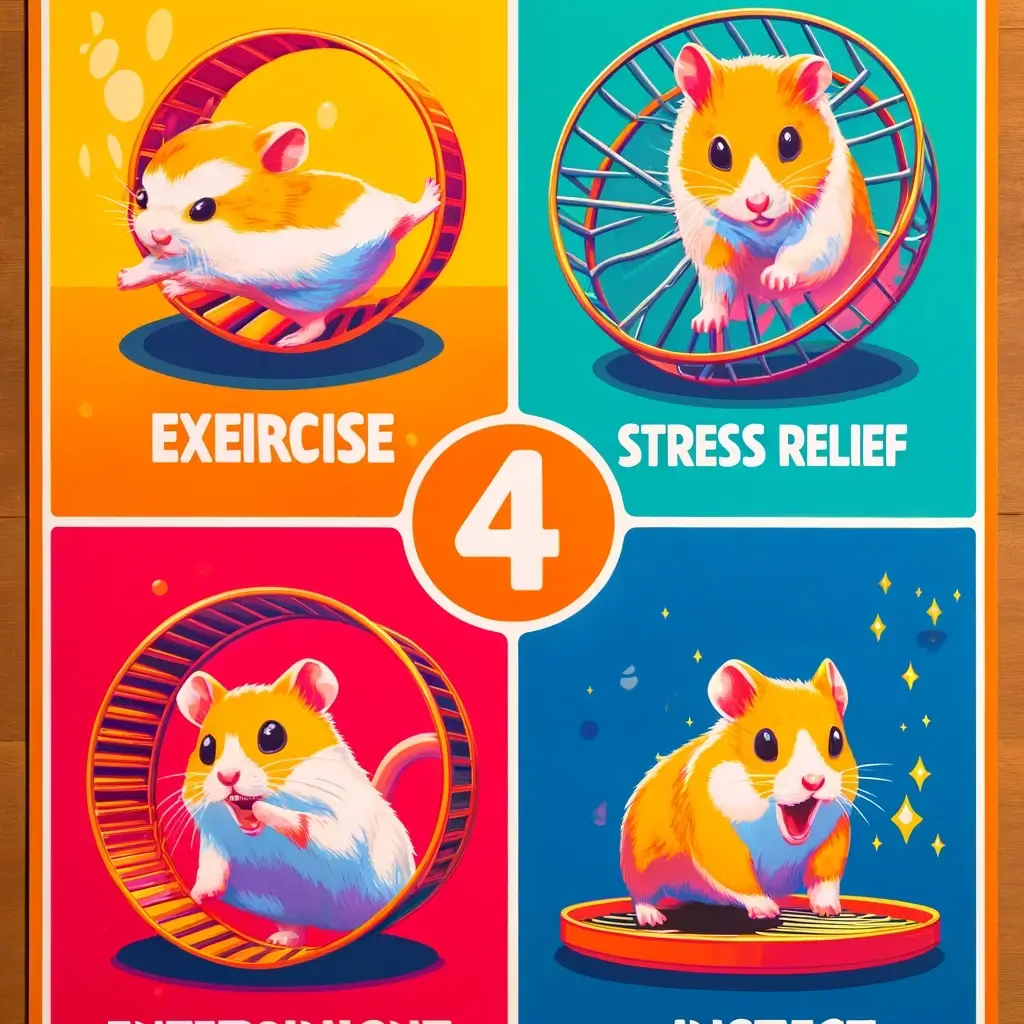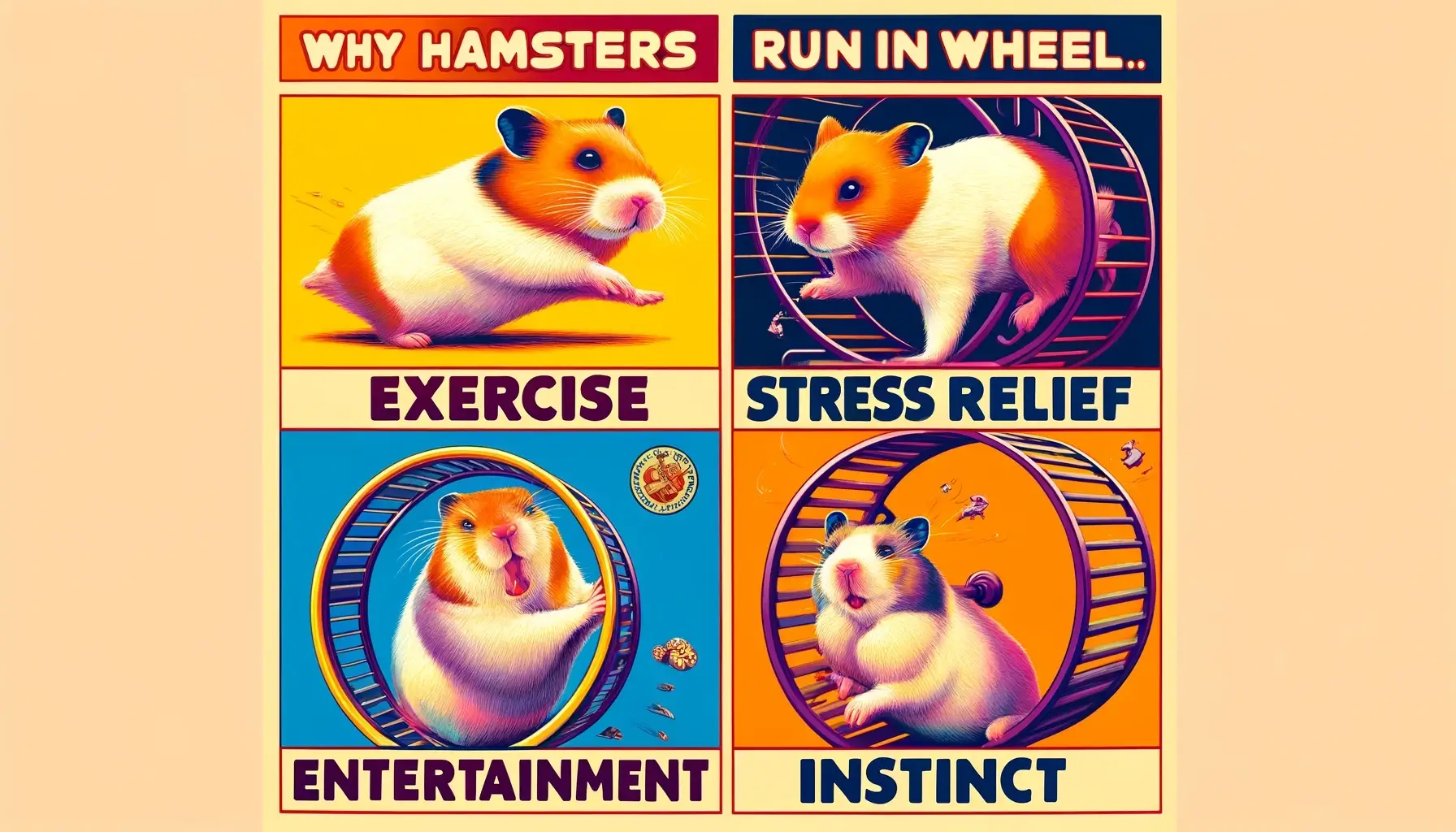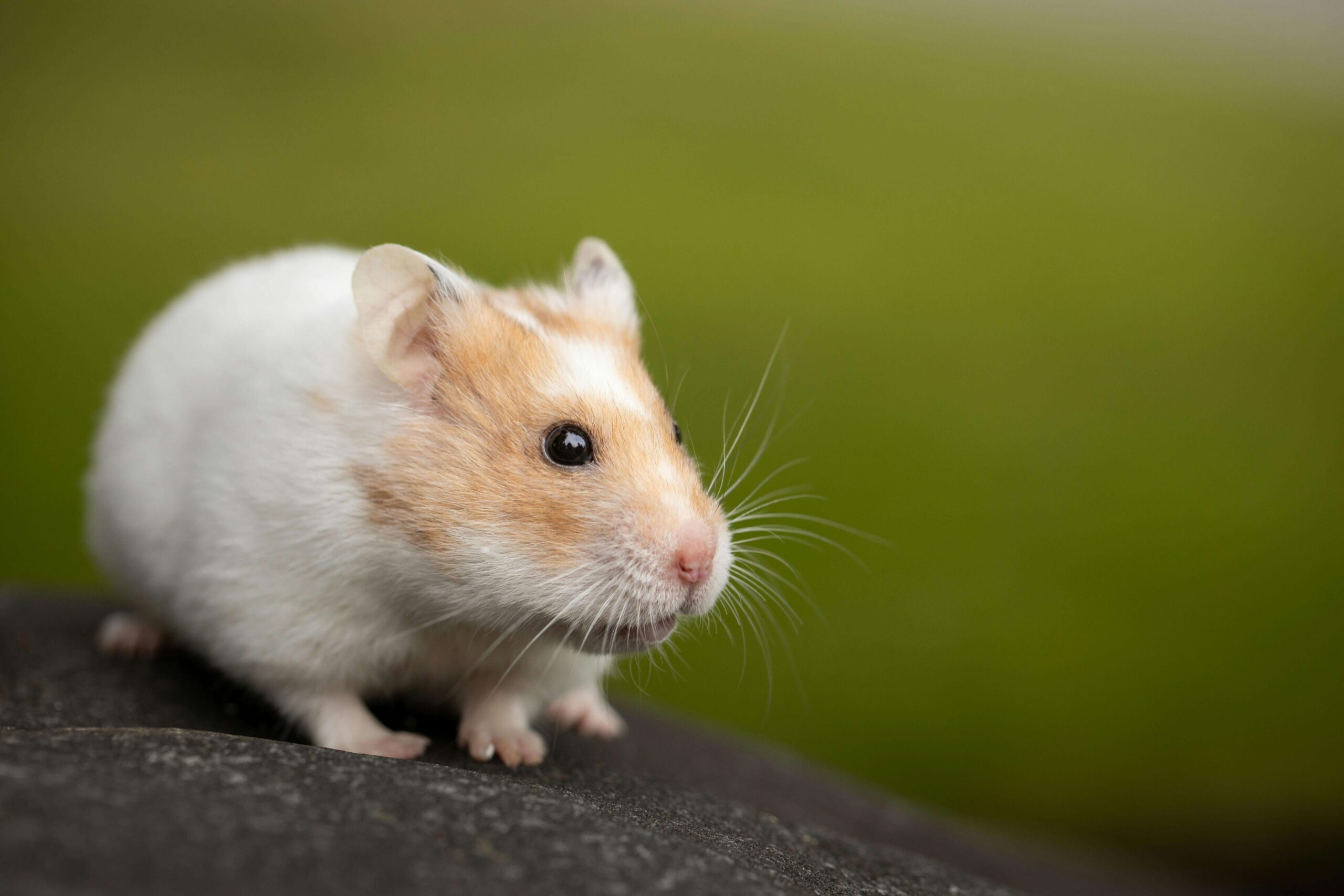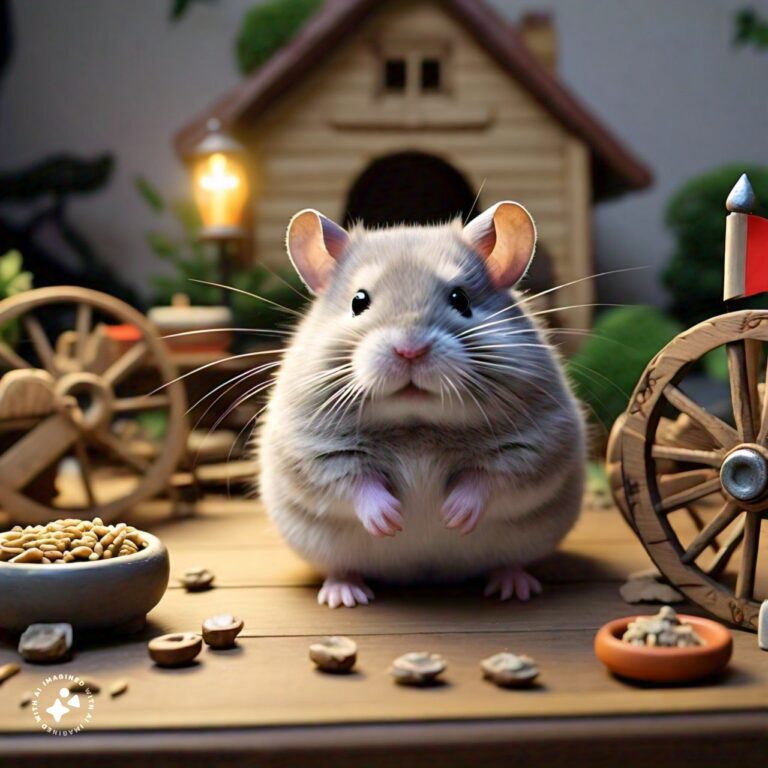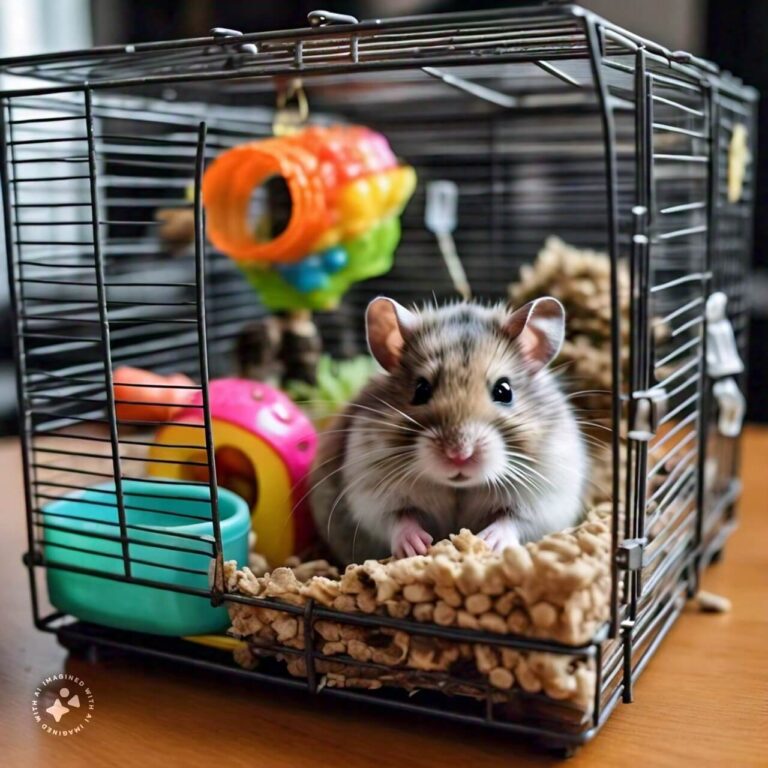Why Hamsters Running In Wheel 4 Reasons – Hamsters.pk
Natural Instinct: Exploring the Innate Drive to Run
Hamsters are adorable, small rodents that have become increasingly popular as pets over the years. One of the most fascinating aspects of hamster behavior is their love for running on wheels. Many pet owners have observed their furry friends spending hours on end, tirelessly running on their exercise wheels. But why do hamsters exhibit this behavior? In this article, we will explore the natural instinct that drives hamsters to run and the evolutionary reasons behind this behavior.
The Origins of Hamsters’ Running Instinct
Hamsters are native to the wild, hailing from various regions across Europe, Asia, and the Middle East. In their natural habitats, these small rodents often need to cover vast distances in search of food, water, and shelter. Running is an essential survival skill that allows them to escape predators, forage for resources, and navigate their environment effectively.
Over time, this need to run has become deeply ingrained in hamsters’ instincts, even when they are kept as pets in captivity. The exercise wheel serves as an outlet for this innate drive, allowing them to satisfy their natural urge to run and explore.
The Role of Foraging Behavior
In the wild, hamsters are foragers, constantly on the move in search of food. They have a keen sense of smell that helps them locate seeds, grains, and other plant matter scattered across their habitat. Running plays a crucial role in their foraging behavior, enabling them to cover more ground and increase their chances of finding food.
When kept as pets, hamsters still possess this foraging instinct. The exercise wheel becomes a substitute for the vast distances they would typically cover in the wild. Running on the wheel allows them to mimic their natural foraging behavior, providing them with a sense of purpose and fulfillment.
The Benefits of Running for Hamsters
Beyond satisfying their natural instincts, running on a wheel offers numerous benefits for pet hamsters. Regular exercise helps keep them physically fit, preventing obesity and related health issues. Running also provides mental stimulation, reducing boredom and stress in captivity.
Moreover, hamsters are crepuscular animals, meaning they are most active during dawn and dusk. In the wild, they would spend these periods foraging and running around. The exercise wheel allows them to maintain their natural activity patterns, even when kept in a cage.
Conclusion
Hamsters’ love for running on wheels is deeply rooted in their natural instincts and evolutionary history. As pets, providing them with an exercise wheel is essential for their physical and mental well-being. It allows them to satisfy their innate drive to run, mimicking their foraging behavior and keeping them active and entertained.
As pet owners, it is crucial to understand and respect hamsters’ natural instincts. By providing them with a suitable environment that includes an exercise wheel, we can ensure that our furry friends lead happy, healthy lives in captivity.
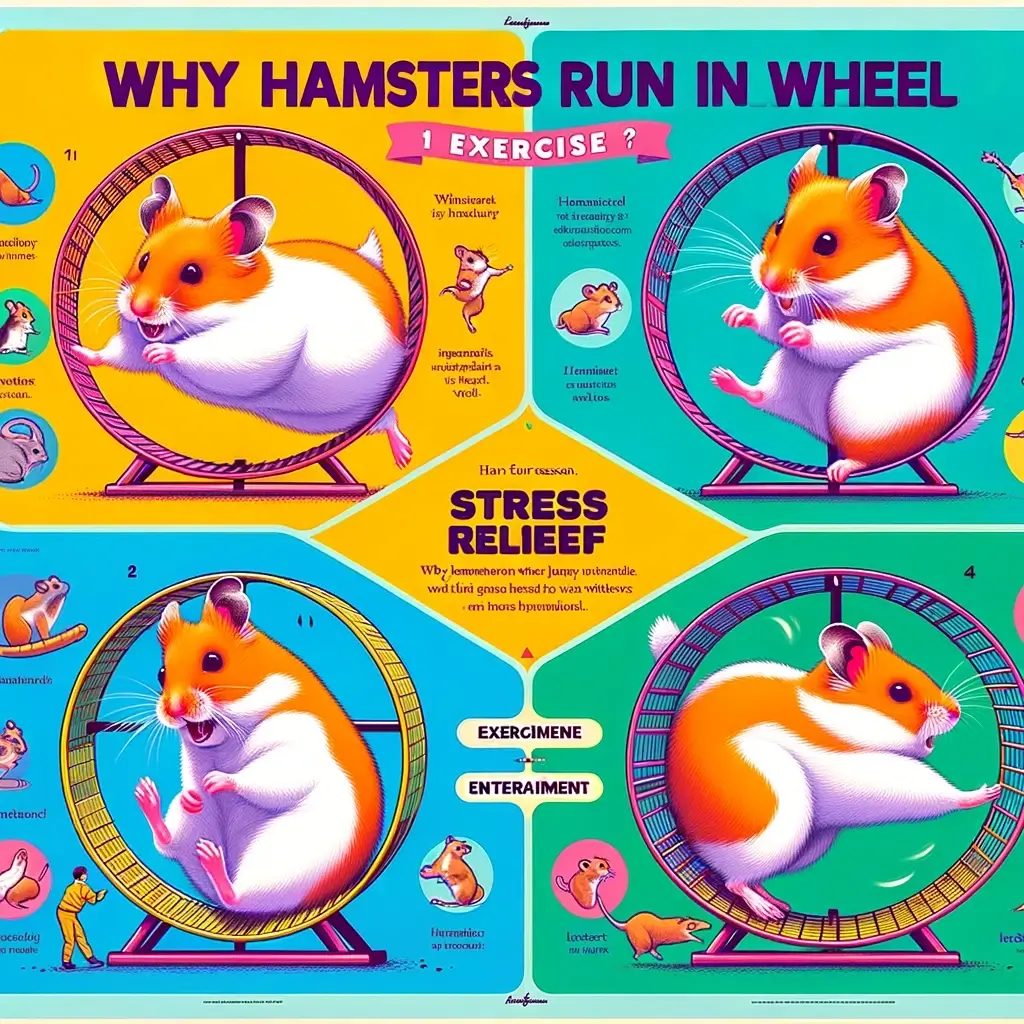
Exercise and Physical Health: Keeping Fit in Captivity
Hamsters are beloved pets known for their cute appearance and playful nature. However, like all living beings, they require regular exercise to maintain their physical health and well-being. In the wild, hamsters cover vast distances foraging for food and escaping predators, but in captivity, their physical activity is limited. This article will explore the importance of exercise for pet hamsters and how owners can ensure their furry friends stay fit and healthy.
The Importance of Exercise for Hamsters
Exercise is crucial for hamsters to maintain a healthy body weight, prevent obesity, and reduce the risk of various health problems. Regular physical activity helps keep their muscles toned, joints flexible, and cardiovascular system functioning optimally. Without sufficient exercise, hamsters can become overweight, leading to a host of health issues such as diabetes, heart disease, and respiratory problems.
Moreover, exercise is not only beneficial for hamsters’ physical health but also their mental well-being. Engaging in physical activity provides mental stimulation, reduces boredom, and helps alleviate stress and anxiety.
Providing Opportunities for Exercise in Captivity
As pet owners, it is our responsibility to ensure that our hamsters have ample opportunities to exercise in captivity. The most common and effective way to provide exercise is by equipping their cage with an exercise wheel. Hamsters have a natural instinct to run, and an appropriately sized wheel allows them to satisfy this urge while getting the necessary physical activity.
When choosing an exercise wheel, it is essential to select one that is large enough for your hamster to run comfortably without arching its back. The wheel should also have a solid surface to prevent injuries to their small feet.
In addition to an exercise wheel, owners can also provide their hamsters with other enrichment activities that promote physical activity. These can include:
- Climbing toys: Hamsters love to climb, and providing them with tunnels, ramps, and ladders can encourage physical activity and exploration.
- Foraging toys: Scatter feeding or hiding food in various toys and puzzles can stimulate their natural foraging instincts and encourage physical activity.
- Playtime outside the cage: Allowing your hamster to explore a safe, hamster-proofed area outside their cage under supervision can provide additional exercise opportunities.
Monitoring Hamster Exercise and Health
While exercise is essential for hamsters, it is crucial to monitor their physical activity and health closely. Observe your hamster’s behavior and energy levels regularly. If you notice any changes, such as lethargy or reduced interest in running on the wheel, it may indicate an underlying health issue that requires veterinary attention.
Additionally, ensure that your hamster has access to a balanced diet and fresh water to support their overall health and energy levels. Consult with a veterinarian who specializes in small animals for guidance on proper nutrition and care.
Conclusion
Exercise is vital for pet hamsters to maintain their physical health and mental well-being in captivity. By providing them with an appropriate exercise wheel and other enrichment activities, owners can ensure that their furry friends stay fit, active, and happy. Regular monitoring of their exercise habits and overall health is essential to detect any potential issues early on.
By prioritizing exercise and physical health, pet owners can help their hamsters lead long, healthy, and fulfilling lives in captivity.
Mental Stimulation: Combating Boredom and Stress
Hamsters are intelligent and curious creatures that require mental stimulation to maintain their overall well-being. In the wild, they face a variety of challenges and engage in activities that keep their minds active and alert. However, in captivity, their environment is often limited, leading to boredom and stress. This article will explore the importance of mental stimulation for pet hamsters and provide tips on how to keep their minds engaged and healthy.
The Consequences of Boredom and Stress in Hamsters
Boredom and stress can have severe consequences for pet hamsters. When their mental needs are not met, they may develop destructive behaviors, such as excessive chewing on cage bars or compulsive grooming. These behaviors can lead to physical injuries and even self-mutilation in extreme cases.
Moreover, a lack of mental stimulation can cause hamsters to become lethargic, lose interest in their surroundings, and exhibit signs of depression. Stress, on the other hand, can weaken their immune system, making them more susceptible to illnesses and reducing their overall quality of life.
Providing Mental Stimulation through Enrichment Activities
To prevent boredom and stress, it is crucial to provide pet hamsters with a mentally stimulating environment. Enrichment activities are an excellent way to keep their minds engaged and encourage natural behaviors. Some examples of enrichment activities include:
- Foraging toys: Hide treats or food pellets in puzzle feeders, scatter them in the bedding, or use foraging mats to encourage hamsters to search for their food, mimicking their natural foraging instincts.
- Tunnels and hideouts: Provide a variety of tunnels, tubes, and hideouts made from different materials for your hamster to explore and navigate through, satisfying their curiosity and need for adventure.
- Chew toys: Offer a selection of safe, chewable toys such as wooden blocks, loofah chews, or untreated apple branches to keep their teeth healthy and provide mental stimulation through gnawing.
- Sensory stimulation: Introduce new scents, textures, and sounds to your hamster’s environment. For example, offer a shallow dig box filled with child-safe sand or shredded paper for burrowing, or place a small piece of hamster-safe fruit or vegetable in their cage for them to investigate.
Interaction and Playtime with Pet Owners
In addition to providing enrichment activities, regular interaction, and playtime with pet owners can significantly contribute to a hamster’s mental well-being. Set aside dedicated time each day to bond with your furry friend outside their cage in a safe, hamster-proofed area.
During playtime, you can create small obstacle courses, offer gentle hand-feeding experiences, or simply let your hamster explore and climb on you under close supervision. These interactions not only provide mental stimulation but also strengthen the bond between you and your pet.
Monitoring Your Hamster’s Well-being
As a responsible pet owner, it is essential to monitor your hamster’s behavior and well-being closely. Observe their activity levels, eating habits, and overall demeanor. If you notice any signs of boredom, stress, or abnormal behavior, take steps to address the issue promptly.
Consider keeping a journal to track your hamster’s behavior and preferences, which can help you identify their favorite enrichment activities and adapt their environment accordingly.
Conclusion
Mental stimulation is vital for the overall well-being of pet hamsters. By providing a variety of enrichment activities and regular interaction, owners can combat boredom and stress, promoting their furry friends’ mental and physical health. Remember to monitor your hamster’s behavior closely and adjust their environment as needed to ensure they lead happy, mentally stimulated lives in captivity.
Nocturnal Activity: Understanding Hamsters’ Night-time Habits
Hamsters are popular pets known for their cute appearance and playful nature. However, many new pet owners are surprised to learn that these small rodents are primarily active during the night. This article will delve into the nocturnal behavior of hamsters, explaining why they are most active after dark and how pet owners can accommodate their natural habits.
The Evolutionary Basis of Nocturnality in Hamsters
In the wild, hamsters are prey animals, constantly at risk of being hunted by predators. To minimize the danger, they have evolved to be nocturnal, meaning they are most active during the night when their natural predators are typically less active.
Nocturnality allows hamsters to forage for food, explore their surroundings, and engage in other essential activities under the cover of darkness, reducing the likelihood of being spotted by potential threats.
Hamsters’ Natural Body Clock
Like many other animals, hamsters possess an internal circadian rhythm that regulates their daily activities. This biological clock is synchronized with the 24-hour day-night cycle, dictating when they should be asleep or awake.
In the case of hamsters, their circadian rhythm is programmed for them to be most active during the night and sleep during the day. This innate schedule persists even in captivity, where the presence of predators is no longer a concern.
Accommodating Hamsters’ Nocturnal Nature in Captivity
As pet owners, it is essential to understand and respect hamsters’ natural nocturnal habits. Expecting them to adapt to a diurnal schedule to suit our preferences can lead to stress and health issues.
To accommodate their night-time activity, consider the following:
- Cage placement: Position your hamster’s cage in a quiet room where they will not be disturbed by loud noises or bright lights during the day when they are trying to sleep.
- Dimming the lights: Ensure that your hamster’s cage is not exposed to direct sunlight or artificial light during the day. If needed, use curtains or shades to create a dark and peaceful environment for them to rest.
- Scheduling playtime: Engage with your hamster during the early evening or late night hours when they are naturally more active. This will provide them with the social interaction they need without disrupting their sleep schedule.
- Providing enrichment: Equip your hamster’s cage with plenty of toys, tunnels, and other enrichment items to keep them mentally stimulated and physically active during their waking hours at night.
Observing Hamsters’ Night-time Behavior
To better understand your hamster’s nocturnal habits, take some time to observe their behavior during the night. You can do this by setting up a night-vision camera or using a dim red light, which will not disturb their natural activities.
Some common nocturnal behaviors you may observe include:
- Wheel running: Hamsters have a strong instinct to run, and they often spend a significant portion of their night on their exercise wheel.
- Foraging and eating: Hamsters are natural foragers and will spend much of their time searching for and hoarding food in their cheek pouches.
- Exploring and burrowing: Hamsters are curious creatures and will investigate every corner of their cage, as well as engage in digging and burrowing behaviors.
Conclusion
Understanding hamsters’ nocturnal nature is crucial for providing them with a suitable living environment and ensuring their well-being. By respecting their natural sleep schedule, offering a dark and quiet space during the day, and engaging with them during their active hours, pet owners can help their furry friends thrive in captivity.
Remember, each hamster is an individual with unique preferences and personalities, so be sure to observe your pet closely and adapt their care routine as needed to best support their nocturnal habits.
